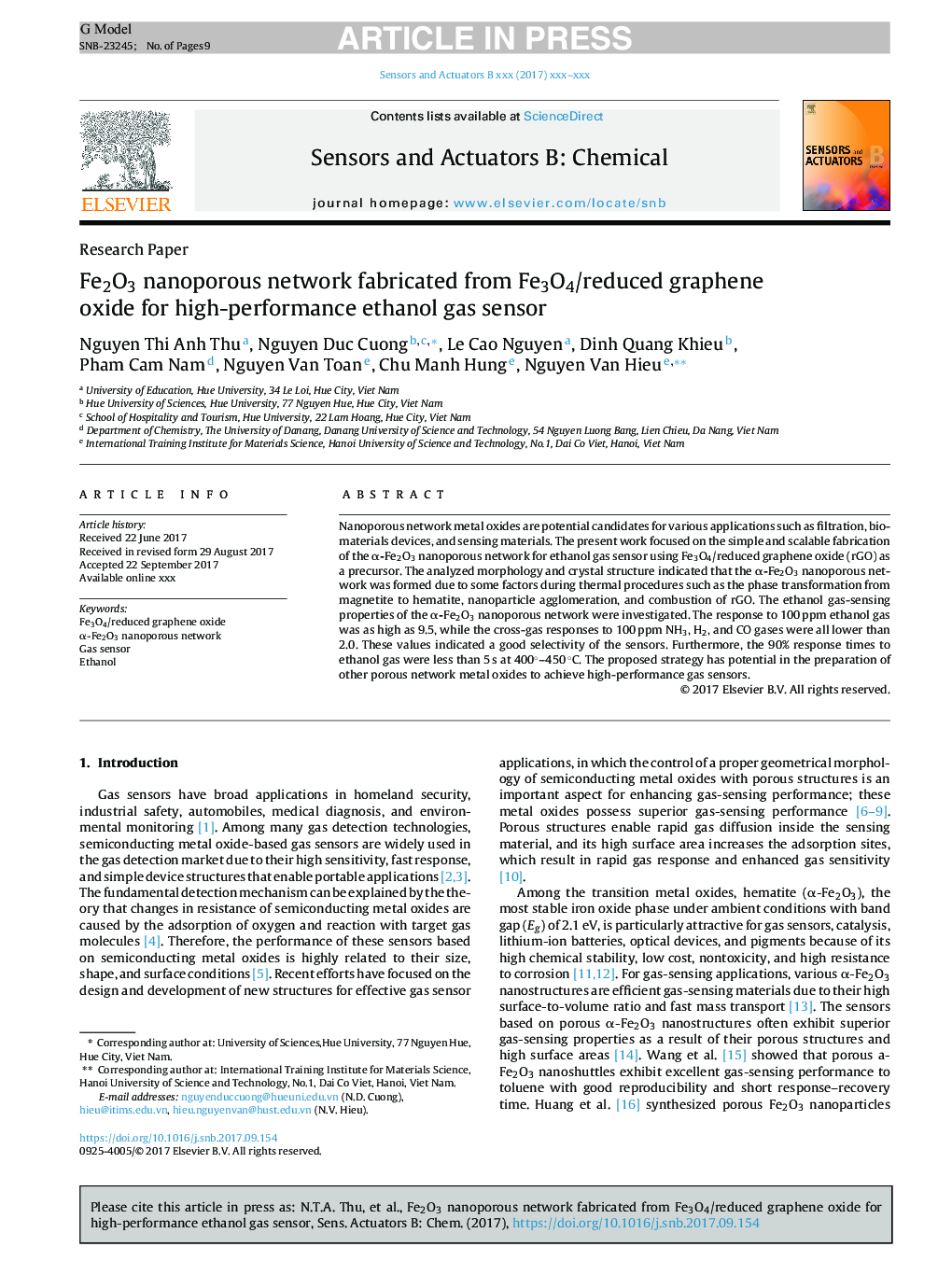| Article ID | Journal | Published Year | Pages | File Type |
|---|---|---|---|---|
| 7141997 | Sensors and Actuators B: Chemical | 2018 | 9 Pages |
Abstract
Nanoporous network metal oxides are potential candidates for various applications such as filtration, biomaterials devices, and sensing materials. The present work focused on the simple and scalable fabrication of the α-Fe2O3 nanoporous network for ethanol gas sensor using Fe3O4/reduced graphene oxide (rGO) as a precursor. The analyzed morphology and crystal structure indicated that the α-Fe2O3 nanoporous network was formed due to some factors during thermal procedures such as the phase transformation from magnetite to hematite, nanoparticle agglomeration, and combustion of rGO. The ethanol gas-sensing properties of the α-Fe2O3 nanoporous network were investigated. The response to 100 ppm ethanol gas was as high as 9.5, while the cross-gas responses to 100 ppm NH3, H2, and CO gases were all lower than 2.0. These values indicated a good selectivity of the sensors. Furthermore, the 90% response times to ethanol gas were less than 5 s at 400°-450 °C. The proposed strategy has potential in the preparation of other porous network metal oxides to achieve high-performance gas sensors.
Keywords
Related Topics
Physical Sciences and Engineering
Chemistry
Analytical Chemistry
Authors
Nguyen Thi Anh Thu, Nguyen Duc Cuong, Le Cao Nguyen, Dinh Quang Khieu, Pham Cam Nam, Nguyen Van Toan, Chu Manh Hung, Nguyen Van Hieu,
